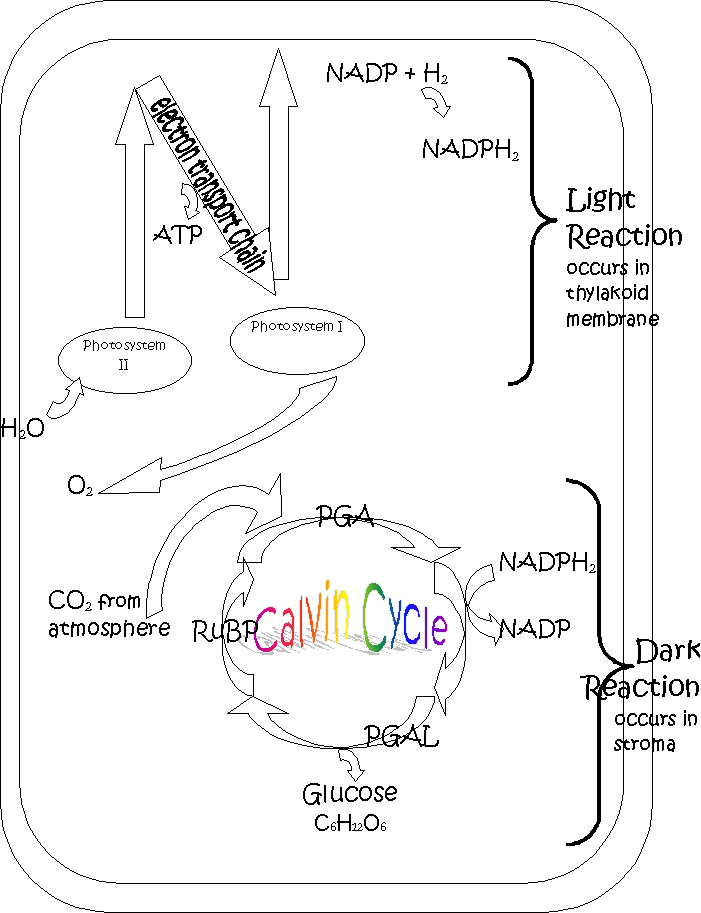
Chemical Reactions
Endergonic: reactions that require free energy
Exergonic: reactions in which energy is released
the process that releases chemical energy for cells to use. An exergonic reaction. All cells go through cellular respiration.
Glycolysis: a process in which one glucose molecule is broken down into 2 pyruvic acid molecules. Occurs in the cytoplasm (therefore in all cells)
2 ATP are used4 ATP are made (net gain of 2 ATP)
2 pyruvic acid molecules are made

Aerobic Respiration: breakdown of pyruvic acid WITH the use of oxygen. Occurs in the mitochondria. Provides most of the energy for the body.
Krebs cycle: releases carbon dioxide and produces 2 ATP for every glucose molecule.
Electron transport chain: produces most of the ATP from a glucose molecule. Water is released.

Light
Light is a form of radiant energy and it travels in waves. A wavelength is the distance between one wave crest and the next.
Visible Spectrum is the range of colors that make up white light. (ROYGBIV)
Plant Pigments
Chlorophyll is the green pigment in chloroplasts.
Carotenoids are the yellow, orange, and red pigments found in the chloroplasts of plants.
Autumn Leaves are the result of a decreased amount of chlorophyll production. Since less chlorophyll is present, other pigments become visible. Leaves will turn from green to yellow, orange, and red.
the process that converts sunlight energy into chemical energy. An endergonic reaction.
Photosynthesis occurs in the chloroplast: a plastid containing chlorophyll (a green, photosynthetic pigment)
Reactions of Photosynthesis
Light reaction: light MUST be present
Water from the atmosphere is split.ATP is formed.
Oxygen is released through the stomata of the leaf.
Dark reaction: light DOES NOT have to be present
Carbon dioxide is taken in from the atmosphere.Glucose is produced.

Differences Between Photosynthesis and Cellular Respiration
When?
Photosynthesis: only occurs with lightRespiration: occurs at all times
Energy source
Photosynthesis: sunRespiration: chemical bonds
Raw materials
Photosynthesis: CO2 and H2ORespiration: glucose and O2
Products
Photosynthesis: glucose and O2Respiration: products: CO2 and H2O
Type of reaction
Photosynthesis: anabolic process (building up)Respiration: catabolic process (breaks down)
Where?
Photosynthesis: occurs in chloroplastRespiration: occurs in the cytoplasm and mitochondria
Energy
Photosynthesis: energy stored in glucoseRespiration: releasing energy from glucose
What kind of cells?
Photosynthesis: only occurs in cells with chlorophyllRespiration: in ALL cells
Similarities of Photosynthesis and Cellular Respiration
ATP is formed in each process.An electron transport chain is used in each.
Many chemical reactions in each.
Enzymes control reactions in each.